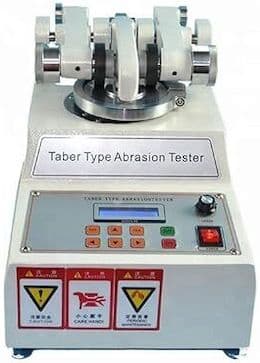
Curated with aloha by
Ted Mooney, P.E. RET

The authoritative public forum
for Metal Finishing 1989-2025

-----
Hardness Testing for Coil Coatings - ASTM D3363
I am an Industrial Chemist. We currently have an end customer that is rejecting coatings based on ASTM D3363, the "Standard Test Method for Film Hardness by Pencil Test." I've been in contact with the pencil supplier numerous times. Each time they remind me that the pencils that they supply are not intended for testing coating hardness. Secondly, they do not measure pencil hardness. They measure the leads based on shading power. This test has been used in the coatings industry for years, however, there has to be a test that has less variability. The within pencil lead variation, the between pencil lead variation, the between lot variation, and the operator to operator variation is enormous. I need an easy hardness test that the customer can perform on line or, I need to know if there are any pencil manufacturer's that certify pencil hardness.
Chad A. Crawford- Springdale, Pennsylvania, USA
2003
What were the responses to the questions of this Ltr. No. 23218.
Gerard Warren Hendershawcoatings manufacturer - Des Plaines, Illinois, USA
2006
Ed. note: sometimes an inquiry doesn't draw a response because no reader is able to help, Gerard. Sorry.
2007
I found this article that may help....
Within the Ceramics Thin Film Group, we measure the hardness and elastic modulus of thin films using instrumented indentation, also known as depth-sensing indentation or, when used at very low test forces, nanoindentation. The technique is capable of measuring hardness, defined as the force on an indenter divided by the projected contact area of the specimen that supports that force, H = F/Ap, for indentations as small as 10nm to 20nm deep. From the same indentation, it can also determine an elastic modulus, often referred to the indentation modulus, Ei, which is defined in terms of the Young's modulus, E, and the Poisson's ratio, v, as Ei = E/(1-v2). Because data can be obtained from very shallow indentations, properties of films as thin as 100nm can often be determined without significant error introduced by the presence of the substrate. For some coating/substrate systems (e.g., soft films on harder substrates), accurate results can be obtained for even thinner films. In the case where the film is mechanically anisotropic, the hardness and modulus measured represent an average of both normal and in-plane properties, with that average weighted somewhat toward the properties in the normal (indentation) direction.
At the moment, there are no standard test methods available for the measurement of hardness or modulus of thin films using instrumented indentation. NIST is involved in several standards activities in this area. The most extensive effort is an international round-robin project begun several years ago within VAMAS Technical Working Area
(TWA) 22: Mechanical Measurements of Thin Films and Coatings. In this project (Project 1: Measurement of Hardness and Young's Modulus of Thin Coatings Using Depth Sensing Indentation), hard and soft coatings of thickness 0.1 µm to 5 µm were distributed to approximately 40 participants, who indented them using a wide range of indentation machines and a wide range of indenter geometries. Data have been collected and a report on the project is in preparation. Efforts are also underway to compare elastic properties of thin films obtained by nanoindentation to results obtained by surface acoustic wave techniques under development in the Materials Reliability Division at NIST Boulder. Finally, NIST and the Bundesanstalt für Materialforschung und-prüfung (BAM) in Germany have begun a joint program to develop thin film Standard Reference Materials (SRMs) for mechanical property testing.
- Livermore California
A. Despite its long use in the surface coatings industry, pencil hardness testing is a very poor means of determining the hardness of a coating. Among it's many shortcomings are its lack of reproducibility and the fact that the test is substrate dependent. At best it is quick rough and ready means of telling whether a coating is readily scratchable, but nothing more.
Most pencil hardness results to be found in the literature are essentially meaningless. This might sound controversial, but unfortunately it is true
To obtain real data on the hardness of your coatings my preference would be to consider indentation methods (nanoindentation if necessary), or for abrasion resistance (subtly different) use Taber abrasion testing.
- Wantage, Oxfordshire, United Kingdom
Q, A, or Comment on THIS thread -or- Start a NEW Thread
